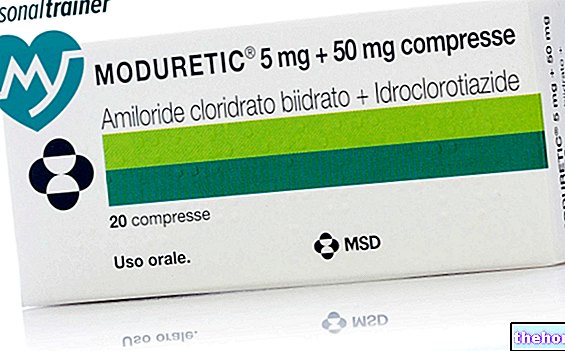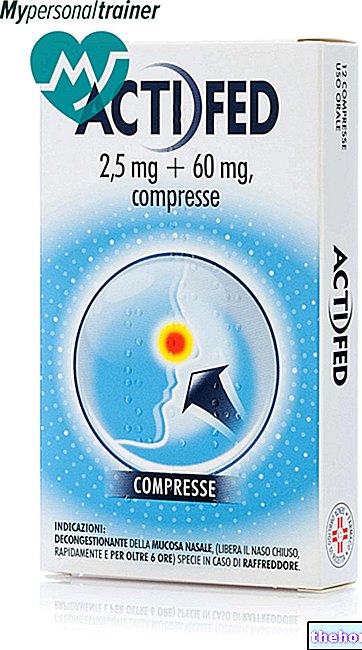Active ingredients: Pentoxifylline
TRENTAL 400 mg modified release tablets
Trental package inserts are available for pack sizes:- TRENTAL 400 mg modified release tablets
- TRENTAL 600 mg modified release tablets
- TRENTAL 100 mg / 5 ml solution for infusion for intra-arterial and intravenous use
Why is Trental used? What is it for?
PHARMACOTHERAPEUTIC CATEGORY
Peripheral vasodilators.
THERAPEUTIC INDICATIONS
Chronic venous ulcers.
Contraindications When Trental should not be used
Trental should not be used in patients with:
- Hypersensitivity to pentoxifylline, to other methylxanthines or to any of the excipients.
- Recent myocardial infarction.
- Severe bleeding (due to the risk of an increased bleeding event).
- Extensive retinal haemorrhage (due to the risk of increased bleeding).
- Pregnancy (see Special Warnings Pregnancy).
Precautions for use What you need to know before taking Trental
At the first signs of an anaphylactic / anaphylactoid reaction, administration of Trental should be discontinued immediately and the physician informed.
Particularly careful monitoring is necessary in patients presenting:
- Hypotension.
- Impaired renal function (see Dose, method and time of administration).
- Severe impairment of liver function.
- Increased tendency to bleed due, for example, to anticoagulant therapies or bleeding disorders (see also Contraindications).
- Severe cardiac arrhythmias.
- concomitant treatment with pentoxifylline and anti-vitamin K (see Interactions)
- concomitant treatment with pentoxifylline and antidiabetic agents (see Interactions)
- concomitant treatment with pentoxifylline and ciprofloxacin (see Interactions)
If retinal haemorrhage occurs during treatment with Trental 400mg, the administration should be discontinued.
Interactions Which drugs or foods may change the effect of Trental
Tell your doctor or pharmacist if you have recently taken any other medicines, even those without a prescription.
The blood glucose lowering effect of insulin or oral antidiabetic agents may be enhanced. Therefore, careful monitoring of patients on drug therapy for diabetes mellitus is recommended.
There have been post-marketing reports of increased anticoagulant activity in patients treated concomitantly with pentoxifylline and anti-vitamin K. Monitoring of anticoagulant activity is recommended in these patients at the time of initiation of pentoxifylline therapy or upon dose modification. .
Trental may increase the hypotensive effect of antihypertensive drugs or drugs with a potential hypotensive effect.
Concomitant administration of pentoxifylline and theophylline may lead to increased theophylline levels in some patients. Therefore, there may be an increase in the frequency and severity of adverse reactions from theophylline.
The concomitant use of ketorolac-trometamine may increase the risk of bleeding.
Concomitant administration of ciprofloxacin may increase the serum concentration of pentoxifylline in some patients. Therefore, there may be an increase in the frequency and severity of adverse reactions following co-administration of the two medicinal products.
Warnings It is important to know that:
There are no data on the use of Trental in children.
Pregnancy and breastfeeding
Ask your doctor or pharmacist for advice before taking any medicine.
There is insufficient clinical experience on the use of the drug in pregnancy. For this reason, Trental is contraindicated during pregnancy. In breastfeeding patients, it is necessary to decide whether to give up breast feeding and start treatment or, vice versa, continue breastfeeding. avoiding the administration of the medicine.
Effects on ability to drive and use machines
No interference with the ability to drive and use machines has been reported.
Dosage and method of use How to use Trental: Dosage
Generally, the dosage is 1 tablet of Trental 400 2-3 times a day.
This dosage can be varied according to the doctor's judgment, also in relation to any maintenance therapies.
The tablets should be swallowed after meals with a little liquid and without chewing.
Regular administration and prolonged treatment are crucial for therapeutic success.
Special populations
Kidney failure
In patients with renal insufficiency the following dose reductions are necessary:
Creatinine clearance less than 30 mL / min: 30% - 50% of the dose
Creatinine clearance less than 10 mL / min: 50% - 70% of the dose
Hepatic insufficiency
Dosage reduction is required, according to individual tolerability, in patients with severe hepatic impairment.
Cardio-circulatory diseases
Therapy should be initiated at low doses in hypotensive patients or in patients with circulatory lability and also in patients who are particularly at risk of a drop in blood pressure (e.g. patients with severe coronary artery disease or significant stenosis of the blood vessels supplying the brain); in such patients the dose should only be increased gradually.
Overdose What to do if you have taken too much Trental
Symptoms
Initial symptoms of acute pentoxifylline overdose may be nausea, dizziness, tachycardia or low blood pressure. In addition, signs such as fever, agitation, a sense of heat and redness in the face, loss of consciousness, areflexia, tonic-clonic convulsions and caffean vomiting can also occur as a sign of gastrointestinal bleeding.
Treatment
No specific antidote is known. If the intake has taken place recently, measures can be taken to prevent further systemic absorption of the active ingredient (eg gastric lavage) or to delay its absorption (eg.Activated carbon).
The treatment of acute overdose and the prevention of complications may require careful monitoring, both general and specific, as well as the establishment of therapeutic measures. In the event of a sharp decrease in blood pressure, plasma-expander should be infused (watch out for signs of edema). .
Keep the respiratory tract clear.
Diazepam for seizures.
In case of accidental ingestion / intake of an excessive dose of Trental, notify your doctor immediately or go to the nearest hospital. If you have any questions about the use of Trental, ask your doctor or pharmacist.
Side Effects What are the side effects of Trental
Like all medicines, Trental can cause side effects, although not everybody gets them.
These undesirable effects have been reported in clinical or post-marketing studies. The frequencies are unknown.
Compliance with the instructions contained in the package leaflet reduces the risk of undesirable effects.
Reporting of side effects
If you get any side effects, talk to your doctor or pharmacist. This includes any possible side effects not listed in this leaflet. Side effects can also be reported directly via the national reporting system at www.agenziafarmaco.gov.it/it/responsabili. By reporting side effects you can help provide more information on the safety of this medicine.
Expiry and Retention
Expiry: see the expiry date printed on the package
The expiry date indicated refers to the product in intact packaging, correctly stored.
Warning: do not use the medicine after the expiry date indicated on the package.
Storage: This medicinal product does not require any special storage conditions.
Keep this medicine out of the reach and sight of children.
Medicines should not be disposed of via wastewater or household waste. Ask your pharmacist how to throw away medicines you no longer use. This will help protect the environment.
Composition and pharmaceutical form
COMPOSITION
One modified-release tablet contains:
Active ingredient: pentoxifylline 400 mg.
Excipients: hydroxyethylcellulose, talc, povidone, hypromellose, magnesium stearate, titanium dioxide, macrogol 8000, E127.
PHARMACEUTICAL FORM AND CONTENT
Modified-release tablets.
30 tablets.
Source Package Leaflet: AIFA (Italian Medicines Agency). Content published in January 2016. The information present may not be up-to-date.
To have access to the most up-to-date version, it is advisable to access the AIFA (Italian Medicines Agency) website. Disclaimer and useful information.
01.0 NAME OF THE MEDICINAL PRODUCT
TRENTAL 400 MG MODIFIED RELEASE TABLETS
02.0 QUALITATIVE AND QUANTITATIVE COMPOSITION
One modified-release tablet contains: 400 mg pentoxifylline.
For the full list of excipients, see section 6.1.
03.0 PHARMACEUTICAL FORM
Modified-release oblong tablets.
04.0 CLINICAL INFORMATION
04.1 Therapeutic indications
Chronic venous ulcers.
04.2 Posology and method of administration
Generally the dosage is 1 tablet 2-3 times a day. This dosage can be varied, in the opinion of the doctor, also in relation to any maintenance therapies.
The tablets should be swallowed after meals and without chewing.
Regular administration and prolonged treatment are crucial for therapeutic success.
Special populations
Kidney failure
In patients with renal insufficiency the following dose reductions are necessary:
Creatinine clearance less than 30 mL / min: 30% - 50% of the dose
Creatinine clearance less than 10 mL / min: 50% - 70% of the dose
Hepatic insufficiency
Dosage reduction is required, according to individual tolerability, in patients with severe hepatic impairment.
Cardio-circulatory diseases
Therapy should be initiated at low doses in hypotensive patients or in patients with circulatory lability and also in patients who are particularly at risk of a drop in blood pressure (e.g. patients with severe coronary artery disease or significant stenosis of the blood vessels supplying the brain); in such patients the dose should only be increased gradually.
04.3 Contraindications
Trental should not be used in patients with:
• Hypersensitivity to pentoxifylline, to other methylxanthines or to any of the excipients.
• Recent myocardial infarction
• Severe bleeding (due to the risk of an increased bleeding event)
• Extensive retinal haemorrhage (due to the risk of increased bleeding)
• Pregnancy (see section 4.6)
04.4 Special warnings and appropriate precautions for use
At the first signs of an anaphylactic / anaphylactoid reaction, administration of Trental should be discontinued immediately and the physician informed.
Particularly careful monitoring is necessary in patients presenting:
• hypotension
• impaired renal function (see section 4.2)
• severe impairment of liver function
• increased tendency to bleed due, for example, to anticoagulant therapies or bleeding disorders (see also section 4.3)
• severe cardiac arrhythmias
• concomitant treatment with pentoxifylline and anti-vitamin K (see section 4.5)
• concomitant treatment with pentoxifylline and antidiabetic agents (see section 4.5)
There are no data on the use of Trental in children.
If retinal haemorrhage occurs during treatment with Trental 400, the administration should be discontinued.
04.5 Interactions with other medicinal products and other forms of interaction
The blood glucose lowering effect of insulin or oral antidiabetic agents may be enhanced. Therefore, careful monitoring of patients on drug therapy for diabetes mellitus is recommended.
There have been post-marketing reports of increased anticoagulant activity in patients treated concomitantly with pentoxifylline and anti-vitamin K. Monitoring of anticoagulant activity is recommended in these patients at the time of initiation of pentoxifylline therapy or upon dose modification. .
Trental may increase the hypotensive effect of antihypertensive drugs or drugs with a potential hypotensive effect.
Concomitant administration of pentoxifylline and theophylline may lead to increased theophylline levels in some patients. Therefore, both increased frequency and severity of adverse reactions from theophylline could occur.
Simultaneous use of ketorolac tromethamine may increase the risk of bleeding.
04.6 Pregnancy and breastfeeding
Pregnancy
There is insufficient clinical experience on the use of the drug in pregnancy, which is why Trental is contraindicated during pregnancy.
Feeding time
In breastfeeding patients, it is necessary to decide whether to give up breast feeding and start treatment or, vice versa, to continue breastfeeding avoiding the administration of the drug.
04.7 Effects on ability to drive and use machines
No interference with the ability to drive and use machines has been reported.
04.8 Undesirable effects
These side effects have been reported in clinical or post-marketing studies. The frequencies are unknown.
04.9 Overdose
Symptoms
Initial symptoms of acute pentoxifylline overdose may be nausea, dizziness, tachycardia or low blood pressure. In addition, signs such as fever, agitation, a sense of heat and redness in the face, loss of consciousness, areflexia, tonic-clonic convulsions and caffean vomiting can also occur as a sign of gastrointestinal bleeding.
Treatment
No specific antidote is known. If the intake has taken place recently, measures can be taken to prevent further systemic absorption of the active ingredient (eg gastric lavage) or to delay its absorption (eg activated charcoal).
The treatment of acute overdose and the prevention of complications may require careful monitoring, both general and specific, as well as the establishment of therapeutic measures.
In the event of a sharp decrease in blood pressure, plasma-expander should be infused (watch out for signs of edema).
Keep the respiratory tract clear.
Diazepam for seizures.
05.0 PHARMACOLOGICAL PROPERTIES
05.1 Pharmacodynamic properties
Pharmacotherapeutic group: peripheral vasodilators.
ATC code: C04AD03.
Pentoxifylline is characterized by the ability to modify the rheological properties of blood; in fact, it normalizes perfusion conditions by reducing blood viscosity and restoring the dynamics of metabolic exchanges at the microcirculation level.
Its action is carried out by increasing the flexibility of red blood cells, inhibiting platelet aggregation, improving fibrinolytic activity and inhibiting leukocyte activation.
05.2 Pharmacokinetic properties
After administration of 1 tablet (400 mg) the blood peak is reached in 1.6 hours and is equal to 42.9 ng / ml. The metabolite M1, [1- (5-hydroxyhexyl) -3.7 dimethylxanthine], is therapeutically active and has an action profile comparable to that of pentoxifylline; its blood peak exceeds that of the unchanged molecule by more than 4 times.
Blood levels of pentoxifylline and the active metabolite M1 were therapeutically active for 8-12 hours.
The administration of more tablets during the day does not cause tissue accumulation of the drug, since the renal elimination of the pentoxifylline metabolites increases in proportion to the administered dose.
05.3 Preclinical safety data
The preclinical data have little clinical relevance in the light of the extensive experience acquired with the use in humans of the active ingredient contained in the medicinal product.
06.0 PHARMACEUTICAL INFORMATION
06.1 Excipients
Hydroxyethylcellulose, talc, povidone, hypromellose, magnesium stearate, titanium dioxide, macrogol 8000 and E 127.
06.2 Incompatibility
They are not known.
06.3 Period of validity
3 years.
06.4 Special precautions for storage
This medicine does not require any special storage conditions.
06.5 Nature of the immediate packaging and contents of the package
Blister; 30 modified release tablets.
06.6 Instructions for use and handling
No special instructions.
07.0 MARKETING AUTHORIZATION HOLDER
Sanofi S.p.A. - Viale L. Bodio, 37 / B - Milan
08.0 MARKETING AUTHORIZATION NUMBER
Trental "400 mg modified release tablets" 30 tablets - AIC 022863056.
09.0 DATE OF FIRST AUTHORIZATION OR RENEWAL OF THE AUTHORIZATION
February 1979 / June 2010.
10.0 DATE OF REVISION OF THE TEXT
October 2014




























